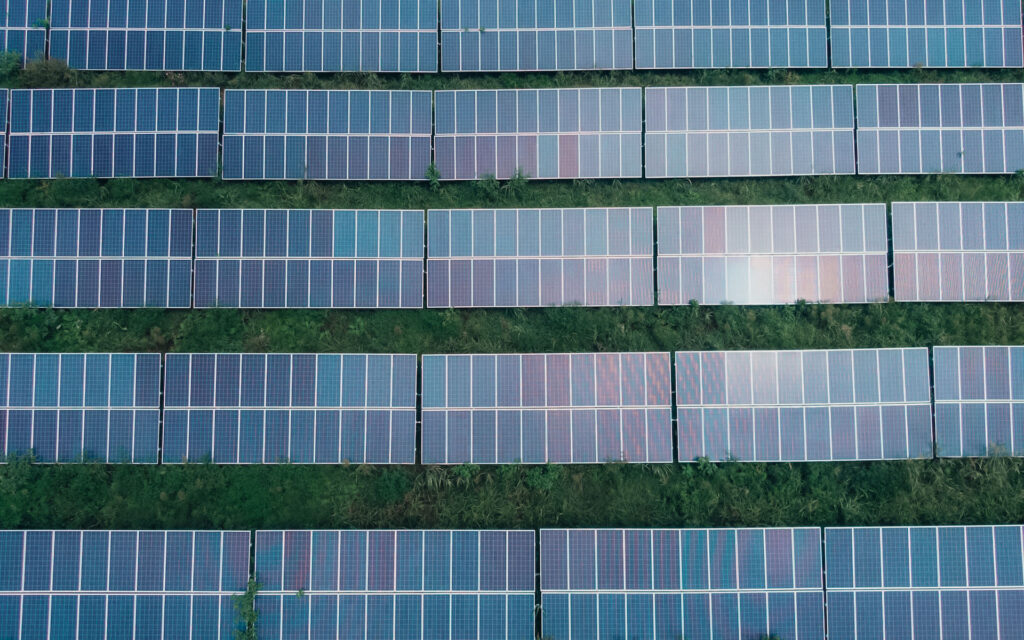“The Sun is the Giver of Life.” Ramses II.
Sun worship is as old as humanity itself. From the Aztec exultation of Tonatiuh, to ancient Egypt’s revered Ra, depictions of the sun as a pure and omnipotent force have saturated cultures across the world. Yet, while numerous polytheistic religions continue to recognize the sun as a divine deity or spirit, solar worship has taken a turn towards the scientific and technological, in a bid to transform how life on earth is and continues to be powered. Expression of the sun power are the photovoltaic panels.
The blueprint
Photovoltaic panels, more colloquially known as solar panels, have revolutionised the project towards sustainable renewable energy. Premised on the conversion of different forms of energy, these panels are made up of solar cells that absorb sunlight. This process of absorption causes a release of electrical energy, and so the sun’s visible light is converted into electricity.
Known as the photovoltaic effect, this phenomenon was first discovered in 1839 by Edmund Bacquerel, a French scientist at only 19 years of age. However, it was not until over 40 years later when the potential of this effect began to be recognised. American inventor Charles Fritts created in 1883 a working solar cell made from the element selenium. He produced the device that became the blueprint for today’s solar panels. Converting an estimated 1-2% of the sunlight that fell on the cell into electrical current, his cell had a limited capacity in its usefulness. This was the beginning of a revolution in energy generation.

Patents and persistence
The end of the 19th century and beginning of the 20th saw the start of patents surrounding solar power and the photovoltaic effect. US investors rushed to protect their ideas surrounding solar-powered devices as early as 1888. Inventor Edward Weston receiving two patents that year for solar cells to “transform radiant energy from the sun”. In 1897, thermal batteries that relied on solar heat were patented by American inventor Harry Reagan. The year 1913 saw William Coblentz patent thermal generators in a similar fashion.
However, this rush towards recognizing and reaping potential benefits of the photovoltaic effect did not become commercially viable until midway through the 20th century . Bell Laboratories, now part of Nokia, realized that silicon was a superior material for use in solar cells than the seleniumused by Fritts. In 1954, scientists Daryl Chapin, Calvin Fuller, and Gerald Pearson produced a solar cell with 6% efficiency. Ultimately they created a practical device for converting solar energy into electricity.
Light years ahead
From the 1950s onwards, rapid developments began to be made in improving the efficiency and use of solar cells. US company Hoffman Electrics in 1957, Bell Laboratories in 1962 or Japan in 1963 are just examples of great achievements in the improvement of photovoltaic systems using solar energy efficiently.

While still cost prohibitive, the use of silicon alongside global energy pressures pushed private and governmental research groups towards more economic solutions. The debut of ‘Solar One’, a solar-powered residential building launched by the University of Delaware in 1973, created a buzz around the far-reaching potential of solar energy to supply and support homes across the country. Moreover, the energy crisis of the 1970s led to the US Congress passing the Solar Energy Research, Development and Demonstration Act of 1974. It was an act of commitment towards making solar energy viable and affordable for public use. During this time, the cost of solar cells had been brought down from $100 per watt to $20. This chance vastly improved the accessibility of solar powered energy.
In 1986, another major milestone was reached by ARCO Solar Inc. Releasing the G-400, the world’s first commercial solar power cell, ARCO had produced an economically viable product. The company was then sold to Siemens for $36 million in 1989. These thin-film cells set a precedence, and continued to be made and refined across the world throughout the 1990s. From solar-powered aeroplanes in 1996, to solar roofing shingles in 1998, the drive towards photovoltaic productivity stirred up incredible innovation and exploration across the 20th century.
Solar sufficiency
Since the turn of the millennium, the use of solar cells to generate huge quantities of domestic and commercial energy has emerged as a crucial way to reduce dependence on non-renewable forms of energy. Evolving from a niche market with small scale applications, photovoltaic systems are now a mainstream energy source. They will power an estimated 100 millions households across the globe by 2030.
National programmes focused on increasing the capacity of photovoltaics have been instrumental in improving their usage and scalability. The UK is one such example, instigating a Green Deal as part of the government’s Energy Act in 2011, which provided grants and interest-free loans to access solar panels for your house. Although this programme ended in 2015, today the ECO4 scheme allows individuals to qualify for funded solar panels if they meet certain age-, income- and ability-based criteria.
In 2022, the German state of Mecklenburg-Vorpommern earmarked €10 million to support the deployment of solar modules with a power of up to 600W on balconies, terraces, and facades. Moreover, the government introduced tax breaks for citizens who introduce small-scale photovoltaic systems into their homes, as well as removing bureaucratic hurdles to improve installation and delivery of such cells.
Examples in other continents
Rwanda and Malawai are two countries that are using solar energy to transform their economies. Rwanda is leading the way in connecting remote communities to power. It received a Strategic Climate Fund of $21.4 millions in 2017 to bring off-grid electricity to villages across the country. Malawai is also diving headfirst into sustainable photovoltaics. An example are the solar water pumps and solar-powered internet and electricity in highschools that have been pushed by NGOs such as The Moving Windmill Project. A 50MW solar park in Malawi’s Ulalo Nyirenda Village, which will generate 1000MW by 2025, further cements this south-eastern African nation as a frontrunner in providing affordable and equitable electrical energy through photovoltaic technology.

At present however, the leading provider of solar-powered electrical energy is China. Holding a photovoltaic capacity of over 300,000MW, China is dominating the field by representing over 33% of total global photovoltaic installations. Nevertheless, supporting only 3.5% of the country’s entire population, countries across South America are making greater inroads in providing solar energy to larger swathes of their populations. Chile is by far the global leader in this respect. It makes use of its cloudless Atacama Desert to provide solar electricity to 18% of its population of almost 20 million. Honduras comes in as runner up. With a series of policy reforms over a decade ago it shifted the country’s electricity generation from 30% to 65% renewable, with more than 10% derived from solar panels. Sun-kissed Greece features at number 4, producing 12% of its electrical energy from solar sources.
Towards a lighter future
The past century has seen exponential change and triumph in the field of scientific and technological discovery. Harnessing the sun’s energy to power a whole host of applications, from aeroplanes and water-pumps, to huge swathes of the global population, is an achievement owed largely to first photovoltaic experiments by Bacquerel and Fritts of the 19th century.

Yet as we look back on the progress made through photovoltaic means, do we not find ourselves proximate to acts of paying homage towards the cosmic deities of Tonatiuh and Ra? We continue to recognise and reach for the sun’s energy, powering our world and world’s to come. We engage in a modern take of what it means to worship the sun: the sun remains the giver of life, from which we depend on.





